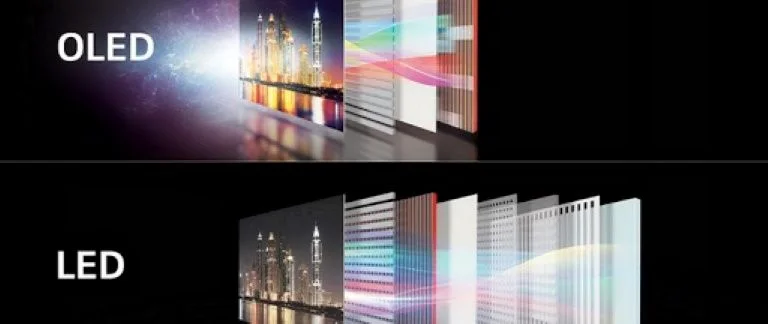The debate of comparing Mini LED Vs Micro LED is much more intricate than it seems to be. There could be many things that may relate to or sometimes they may provide some differences in uses of both types.
Here we’ll be able to identify the features and different aspects that will help our readers understand what are these terms used for and what makes them unique for various purposes.
What is Mini LED?
The Mini LED is a backlighting type that is employed for the LCD TV. These miniature backlights are configured in FALD (Full Array Local Dimming) zones.
They are used in tandem with the QLED to provide ideal control over backlighting. As a result, you will enjoy crispier image quality which could be compared with LED even.
You can expect the Mini LED to prove enhances brightness and contrast in the image quality. This will be very similar to what you could expect with OLED. The subject technology enables control to be taken at the pixel level. This allows in getting the deeper blacks which is comparable to that of OLED.
You must note here that OLED does not come with any backlighting functionality as they are capable of emitting the light on their own.
The Mini LED on the other end does emit lights but it also requires a certain LCD layer or illumination for reproducing the color.
What is Micro-LED?
Micro-LED in contrast to Mini LED is very much similar to the OLED. They do emit their light and for this reason, they do not require to have any backlighting at all. Such types are regarded more far more superior than the OLED displays. The brightness of such a Micro LED display is an exception along with higher contrast levels and richer colors.
In short, the Micro LED combines the best features of both the backlit LED and the OLED display technology. If we go on to further analyze the Micro LED then we see them coming with a much smaller size than the Mini LED.

The diode size is in microns and that makes them in the millionth part of a meter. Every Micro LED is part of a pixel and this makes them emit light at the pixel level. As the Micro LEDs are tinier so they are also costly and harder to produce.
You can expect Micro LED to give higher resolution and better luminance as compared to the OLED and this makes them suitable for premium displays.
What is OLED?
OLED stands for Organic Light-Emitting Diodes. It is capable of producing the most desirable picture quality for any of the known display technologies. The vast majority of monitors and TVs today are based on LCD technology and some of the better manufacturers have introduced OLED.

They come at a much superior price for the level of picture quality it produces. However, they have burn-in issues which are quite highlighted and a concern for the consumers who spend lavishly on OLED-enabled products.
The OLED technology is then entrusted with the top mobile manufacturers of today. But, this is not the same as what you will find in monitors and TV displays of today. However, the technology has got its reality check by the Micro and Mini LEDs discussed above.
It is expected for the OLED to take the backseat as Micro and Mini LEDs for their exceptional features and no burn-in issue would dominate it completely.
Evaluating Mini LED and Micro LED based on their Burn-in:
The burn-in phenomenon refers to that persistent section of the image on a display that keeps as a ghostly background irrespective of what is being displayed on the screen. When it comes to the OLED displays, burn-in is very much a possibility.
The top manufacturers give special consideration to burn in and offer their products with reduced OLED burn-in effects. You must also note that the burn-in is no physical damage to the screen. Rather, it is the degradation of the organic compound that is induced at the sub-pixel level.
If we look into the technology of Micro LEDs or how they work then we see them not producing too much heat that could damage the surface of the screen. Further, the compounds used don’t also degrade the speed as compared with the OLED.
- Hdr10 vs Dolby Vision: What Makes Them Different
- Active Vs Passive 3d: A Factual Evaluation of Pros and Cons.
On the flip side, the dynamics of a Mini LED are the same as Micro LEDs when compared to the burn-in issue. They also do not produce that much heat which may result in screen damage.
In short, either of the Micro or Mini LED will not suffer from any burn-in, which is only a known thing with the OLED displays. This burn-in issue is more common with Plasma and CRT displays.
Which Is Better, Mini LED or Micro LED?
If we look closely at both the Micro and Mini LEDs, then the latter is expected to become a full-fledged next-generation technology. The Micro LED is preferred for illuminating light of its own, rather than relying on the backlight, which is a thing known as the Micro LEDs.
The Mini LED is highly likely to be consumed by the display manufacturers for the sake of enhancing the existing display technologies. Therefore, in comparison, Micro LED is far more superior to the Mini LED for the reasons given.
You will likely find both of them making their place in the living rooms of the future. But, Micro LED will be a thing apart as it is set to be making a headline act whereas the Mini LED will be mainly used in the form of support.
Is There Anything Better Than OLED?
There are speculations, rather, confirmed the news that Micro and Mini LEDs would overtake OLED displays shortly. It is because of the reason that both the Micro and Mini LEDs have similar advantages and do not come with any burn-in kind of an issue.
However, if we closely look at the Micro and Mini LED then the latter has a definite edge over the former for its specific technology and the way it works. It is mainly because of the reason that the Mini LED does not have any backlight, rather it emits light of its own.
This makes the Mini LED the best choice and a perfect compromise between Micro LED and OLED displays. Conclusively, we may also say that both Micro and Mini LEDs with their respective features are better than OLED technology. It is something to look for, which is well above their OLED counterpart.
Conclusion:
In essence, Micro and Mini LEDs are considered as the future which is slowly and gradually overtaking the OLED displays. It is true for all monitor displays, TV screens, mobile, and tablet screens.
The reason is primarily because of their effective technology with no burn-in issues that is a thing known with the OLEDs.
Out of all the display technologies discussed here, Mini LED is the most optimum of all for its ability to emit light of its own. Mini LED comes with backlighting and that is more suitable as a support technology for producing better displays and getting crisper images that lead to a better user experience.

Leave a Reply